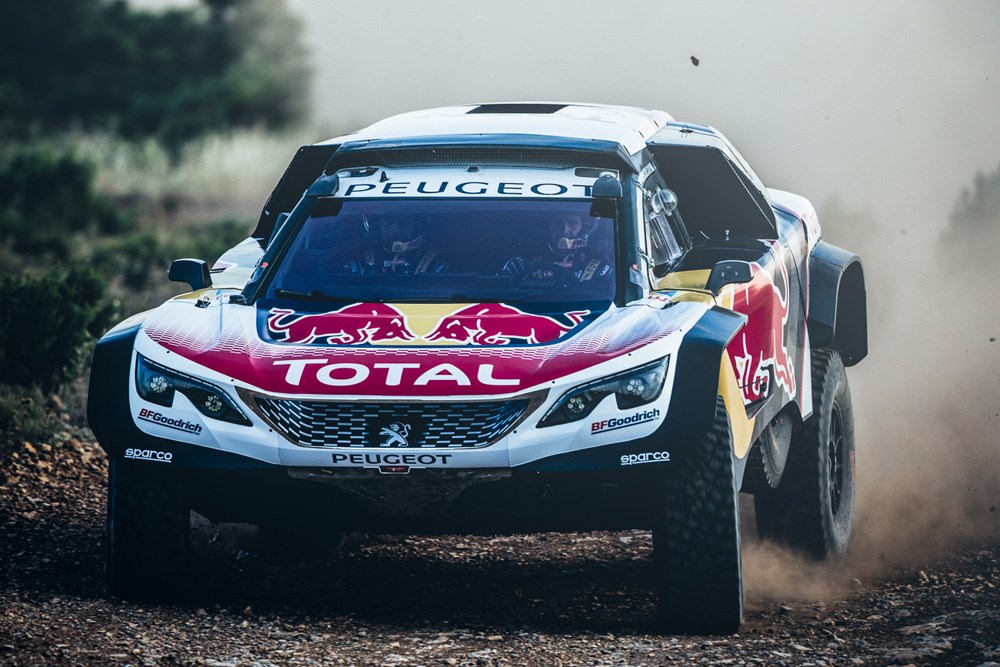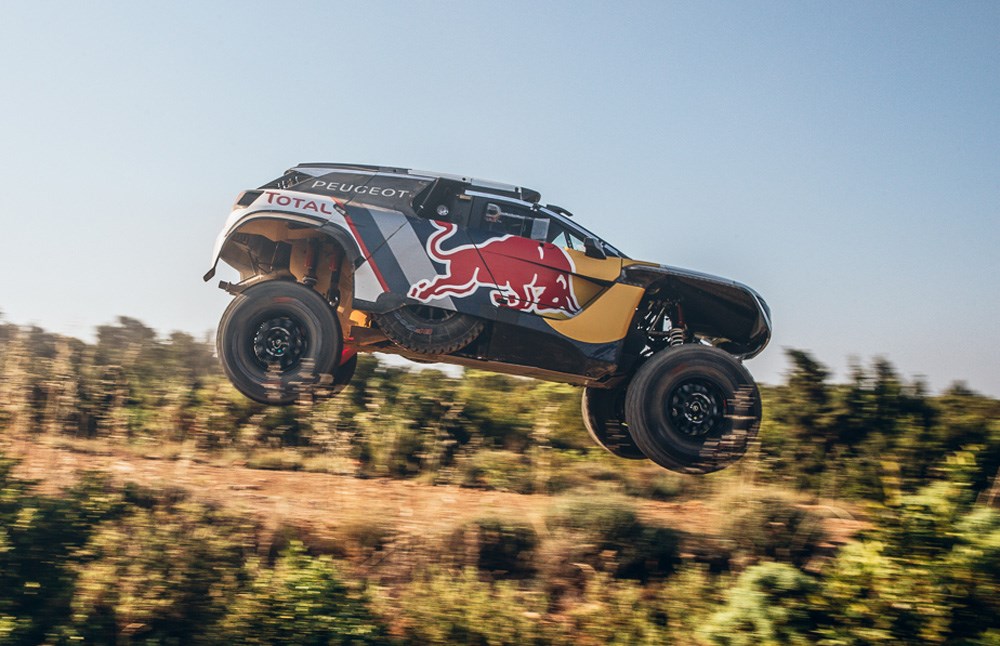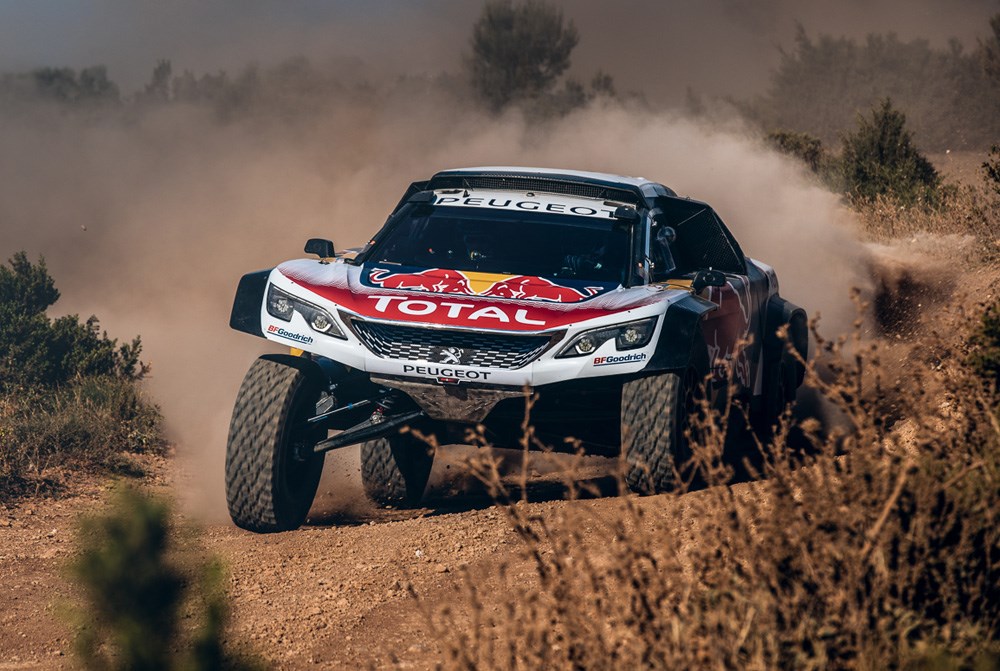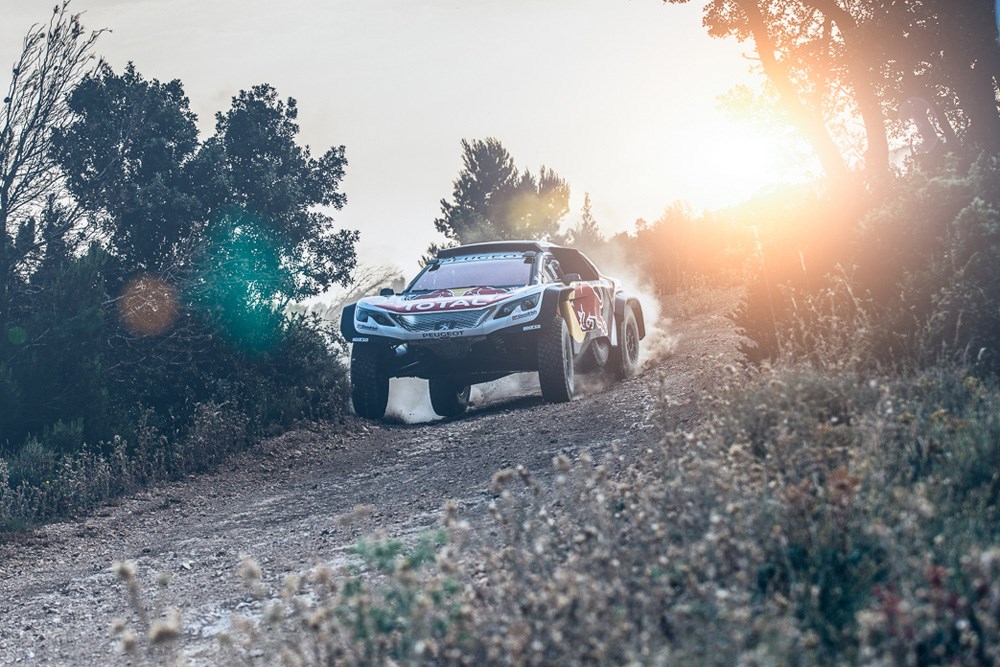Peugeot is debuting the next evolution of its Rally Raid contender with nine-time world rally champion Sebastien Loeb behind the wheel for the 10,000km trans-Eurasian Silk Way Rally which begins on Friday.
A wider version of the 2017 Dakar Rally-winning 3008DKR has been developed by the Peugeot Sport engineers as part of the target to claim a third consecutive Dakar Rally win in January 2018.
Loeb will test the new car in competition during the 15-day Silk Way Rally which starts from Moscow’s Red Square and finishes on July 22 in the Chinese city of Xian, having raced through Russia, Kazakhstan and China via the Gobi Desert. The rally itinerary includes over 4000km of timed special stages.
Peugeot’s new car is called 3008DKR Maxi and follows the 2016 Dakar winning 2008DKR and this year’s winning 3008DKR with the key change being a wider track designed to help it conquer the gravel roads, dunes and mountains of the most famous endurance rallies in the world.

The Maxi version is 200mm wider (now 2400mm) than its predecessor, due to the suspension track on each side being increased by 100mm. To achieve this, the upper and lower wishbones are new, as well as front and rear track rod ends and the driveshafts. As a result, the stability and dynamics of the car are improved, expecting increased performance.
The 3008DKR Maxi continues with its proven 3.0-litre V6 twin turbo diesel engine, six-speed Sadev sequential transmission and rear-wheel-drive. The diesel develops about 255kW but its main attribute is 800Nm of torque.
Loeb will campaign the new Maxi version in the Silk Way Rally while team-mates Stephane Peterhansel and 2017 Silk Way Rally winner Cyril Despres are driving the current specification 3008DKR.
‘‘I think the car is much more stable now that it is wider, and so it feels a bit different to drive,’’ said Loeb.

‘‘In the very narrow and technical parts that does mean it’s more cumbersome of course, but in terms of stability and driving it’s definitely a step forward. The car has less of a tendency to roll on its suspension now, so that gives you more confidence to attack and get it sideways.
‘‘I’d say the strongest point of the Peugeot 3008DKR Maxi is the off-road ability that it has. With its wide track and big wheels, it can go more or less anywhere.’’ Loeb said.
‘‘It’s maybe not so agile on stage-type roads: that’s more the territory of four-wheel drive cars. But the advantage of our car is the fact that it can tackle anything, especially the dunes.’’
Peterhansel and Despres will join Loeb and a fourth entry driven by Carlos Sainz (Spain) when Peugeot Sport defends its Dakar Rally crown in 2018.

‘‘As soon as we crossed the finish ramp of the Dakar in January, we started to work on the next generation of car to take on this monumental challenge,’’ said Bruno Famin, Peugeot Sport Director.
‘‘Of course, there’s only one thing more difficult than winning and that’s carrying on winning, against very strong opposition.
‘‘That’s why our engineers have a mission to continually improve the car, using their know-how to constantly raise the level and give our drivers the best chance of success.

‘‘The latest evolutions we have brought to the car improve both stability and performance. Sebastien Loeb will be the driver giving our Peugeot 3008DKR Maxi its competitive debut on the Silk Way Rally, after a number of test sessions that have been carried out already by all the drivers.
"The data that will now be collected in real competition will help us define the definitive specification for next year’s Dakar.’’
The main opposition to Peugeot Sport at the Silk Way Rally is likely to come from the X-Raid Mini Team and the Toyota Gazoo Racing Hilux V8 driven by Qatar’s Nasser Al-Attiyah.















